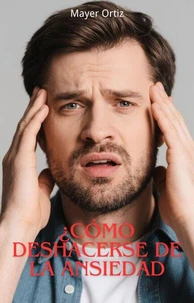This book starts with the neuroanatomical basis of anxiety, explains in detail the role of the amygdala, prefrontal cortex, and hippocampus in the formation of anxiety, and reveals the influence of overactivation of the HPA axis and inflammatory factors. By distinguishing between normal anxiety and pathological anxiety, the "three D principles" (pain, functional impairment, and abnormality) guide readers to identify their own state.
Then, intervention methods such as cognitive behavioral therapy (CBT), exposure therapy, and mindfulness meditation are launched, and anxiety coping strategies for special groups such as children, adolescents, and the elderly are added. Ultimately, it points to the growth mindset of "reconciling with anxiety" to help readers transform anxiety into an opportunity for self-cognition.
This book starts with the neuroanatomical basis of anxiety, explains in detail the role of the amygdala, prefrontal cortex, and hippocampus in the formation of anxiety, and reveals the influence of overactivation of the HPA axis and inflammatory factors. By distinguishing between normal anxiety and pathological anxiety, the "three D principles" (pain, functional impairment, and abnormality) guide readers to identify their own state.
Then, intervention methods such as cognitive behavioral therapy (CBT), exposure therapy, and mindfulness meditation are launched, and anxiety coping strategies for special groups such as children, adolescents, and the elderly are added. Ultimately, it points to the growth mindset of "reconciling with anxiety" to help readers transform anxiety into an opportunity for self-cognition.

 , qui est-ce ?
, qui est-ce ?